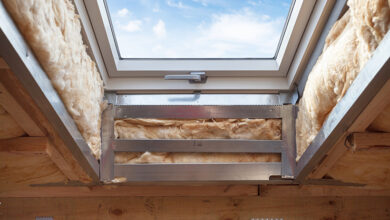Underfloor heating review
We can’t get enough of writing about heating solutions. Whether it’s how to build a sauna or that it’s time to check your boiler, we’re intent on beating the cold. Today we look at underfloor heating.
Water underfloor heating
An important aspect of water underfloor heating is that it has to be compatible to the boiler its connected to. The boiler must be able to handle the pressure and a professional should always execute the installation. Hiring a professional will make it more costly, however, water underfloor heating is more efficient than radiators, so the energy efficiency costs in the long run can save money. Although it sounds like good news, these savings, according to the EST (Energy Saving Trust), might only save £20 per year. More about underfloor heating cost and installation.
Electric underfloor heating
Even though electric underfloor heating can be fitted by a homeowner, it’s always advisable that an electrician is consulted. The electrician will connect the system to a thermostat, from which, you’ll be able program the heating. For instance, you probably don’t want it turned on at night, but definitely in the morning. Electric underfloor heating is an expensive system (less costly to fit, but more costly to run) and if you’re installation area is very big it will certainly costs a penny or two.

Pros and cons of underfloor heating
Pros
Whether you invest in electric underfloor heating or water underfloor heating, both solutions deliver warm, toasty floors. The idea of not having to wake up early in the morning and put your feet on cold tiles is the biggest advantage of them all.
Unlike radiators, which push heat up to the ceiling, underfloor heating produces a controllable climate and makes sure the heat is evenly distributed. As long as the rest of the house is well insulated, it’s a great energy saving solution.
Again, in insulated houses, radiators can be removed, which will free up living space. Design sensitive homeowners can also rejoice that a room will look a lot better without unsightly radiators.
Underfloor heating doesn’t just work with stoned or tiled floors; wood, vinyl or even carpeted surfaces are also a possibility. Bear in mind that the carpeted surfaces, however, can be too thick, which means that the heat won’t rise as easily.
Something to note from an investment perspective is that installing underfloor heating might increase your property value.
Cons
Underfloor heating takes slower to heat up than regular radiators, and it takes longer to cool down too.
If you don’t want to rely solely on underfloor heating, you better keep your radiators. This means that it becomes expensive to run, as you’ll be paying for heating coming both from the floor and the radiators. Installation costs can be pricey too.
Be careful where you place your furniture when decorating, as underfloor heating shouldn’t be placed underneath fittings. Consider if this will be an obstacle when you furnish a room.
For water underfloor heating, there needs to be enough space under the floor to fit the heating system. If there isn’t, the floor will need re-modelling.
If you think underfloor heating is for you, post your job for free up to three local flooring specialists will get in touch and quote. Read their ratings and pick the right one for you. When you’re walking around without slippers on your toasty floor, don’t forget to rate your floor fitter
Related posts:




